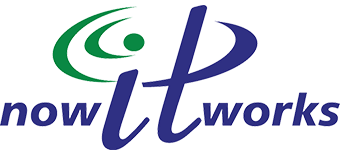Sometimes, even the most seemingly high-tech problems have incredibly low-tech solutions. Here is an example:
For the past six months, one of our client’s servers has been consistently running low on disk space. My team and I have been proactively working on the problem, which usually means just adding more space to the server.
But we got to the point where, even in a virtual environment, they had used up just about every square inch of storage. So we scheduled a meeting with the client, a company that offers translation and interpretation services, where we told them about the problem and started trying to understand why they needed to keep all of this data. We used colorful charts and graphs to show them where the data was going. The president of the company called in one of the department heads, a woman named Laura, because her department had some of the largest folders on the server.
Laura responded simply, “Oh yeah. I copied 15 DVD’s worth of audio files to the server.”
My mouth dropped open.
Laura explained that the DVDs were part of a project where the audio needed to be converted into text and then translated from Spanish into English.
After 20 minutes of discussing the technical parts of the job, the president of the company turned to me and said, “Now what?”
First Challenge
This is where what appeared to be a high-tech problem instead became a business challenge. I began asking questions about the terms of the contract between the company and its client. How long did the company have to hold on to the data?
The answer was simple: there was no clause in the contract about keeping data for a specific time. Even if there was, what would happen if the client came back afterwards and said there was an issue with the translation? Without the original source file, my client could be in hot water.
Everyone in the meeting stood up and went to Laura’s desk to see exactly where the files were. This particular job had been closed for three months. The president turned to me again and said, “Now what?”
Second Challenge
I answered his question with two questions. “What happens at the end of your project?” I asked. “How do you close this project out?”
They explained that they send the completed part of the project to the client, and wait for a response back if there are any questions or issues. That means the data just sits there, forever.
The Takeaways
Here were the three takeaways from this meeting:
- My client needs to revise its contracts to discuss keeping data for a set period of time.
- My client needs to create a new contract just for transcription – rather than using a standard translation contract.
- My client needs to revise the process when it comes to ending projects.
Navigating this challenge and ultimately helping them figure out a low-tech solution was amazing. If you are running into IT challenges, there might be a low tech solution or an opportunity to uncover a business solution, reach out to me today – 860.899.1861.
